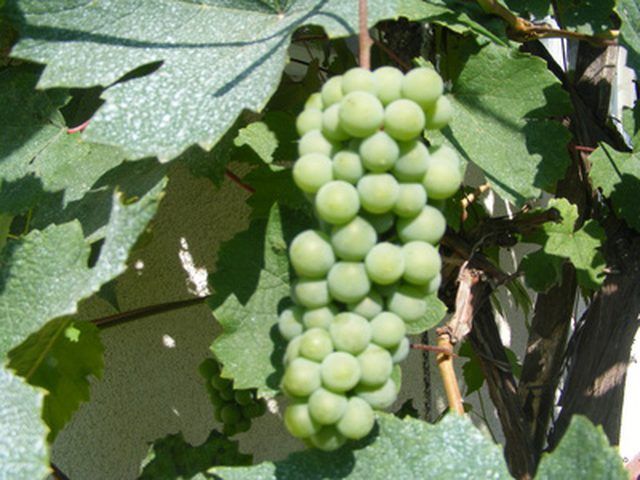Bulbs
Flower Basics
Flower Beds & Specialty Gardens
Flower Garden
Garden Furniture
Garden Gnomes
Garden Seeds
Garden Sheds
Garden Statues
Garden Tools & Supplies
Gardening Basics
Green & Organic
Groundcovers & Vines
Growing Annuals
Growing Basil
Growing Beans
Growing Berries
Growing Blueberries
Growing Cactus
Growing Corn
Growing Cotton
Growing Edibles
Growing Flowers
Growing Garlic
Growing Grapes
Growing Grass
Growing Herbs
Growing Jasmine
Growing Mint
Growing Mushrooms
Orchids
Growing Peanuts
Growing Perennials
Growing Plants
Growing Rosemary
Growing Roses
Growing Strawberries
Growing Sunflowers
Growing Thyme
Growing Tomatoes
Growing Tulips
Growing Vegetables
Herb Basics
Herb Garden
Indoor Growing
Landscaping Basics
Landscaping Patios
Landscaping Plants
Landscaping Shrubs
Landscaping Trees
Landscaping Walks & Pathways
Lawn Basics
Lawn Maintenance
Lawn Mowers
Lawn Ornaments
Lawn Planting
Lawn Tools
Outdoor Growing
Overall Landscape Planning
Pests, Weeds & Problems
Plant Basics
Rock Garden
Rose Garden
Shrubs
Soil
Specialty Gardens
Trees
Vegetable Garden
Yard Maintenance
How to Grow Muscadine Grapes From Seed
How to Grow Muscadine Grapes From Seed. Native to Florida and the southern portion of the U.S., muscadine grapes grow in small clusters. Most grape farmers use muscadine grapes in wines, jams, jellies and juices, but the fruit also offers a pleasing taste when eaten directly from the vine. Muscadine grapes prefer to grow in sunny, well-drained...

Native to Florida and the southern portion of the U.S., muscadine grapes grow in small clusters. Most grape farmers use muscadine grapes in wines, jams, jellies and juices, but the fruit also offers a pleasing taste when eaten directly from the vine. Muscadine grapes prefer to grow in sunny, well-drained soils of USDA hardiness zones 6 through 9. Within one of these hardiness zones you can plant muscadine grapes successfully in your background landscape.
Things You'll Need
Muscadine grape seeds
Peat moss
4-inch pots
Sterile potting soil
Spray bottle
6-inch pots
Soil testing kit
Garden fork
Lime or peat moss
Soaker hose
Flexible cording
Stakes
Trellises
Mulch
Fertilizer
Grow lights
Plant heating pad
Seed Germination
Remove muscadine grape seeds from the ripe fruit. Remove any attached pulp. Rinse with lukewarm water. Lay the seeds on a paper plate to dry, undisturbed for 24 hours.
Place damp peat moss into a plastic sandwich until it is half full. Drop the muscadine grape seeds into the baggie and seal it. Place the baggie in the refrigerator for three months.
Pour sterile potting soil into 4-inch pots until they are three-fourths full. Remove the muscadine grape seeds from the refrigerator after the three-month stratification period. Push two to three seeds ? of an inch into the soil of each pot.
Mist the soil with lukewarm water. Set the pots on a tray. Place the tray in an area that receives bright, indirect light. Maintain a temperature of approximately 75 degrees F during the germination process, which usually begins within two to three weeks.
Maintain bright light and moist soil conditions as the muscadine grape seedlings continue to grow. Transplant the seedlings into 6-inch pots when they outgrow the 4-inch pots. Transplant the seedlings outdoors after a full year of growth.
Transplanting Outdoors
Dig holes large enough to accommodate the root balls of the muscadine grape seedlings. The leaves of the plants should remain above the soil line when positioned in the holes. Space the holes 20 feet apart.
Keep the soil moist at a 1-inch depth throughout the growing season. After the first year of growth, muscadine grapes will only require supplemental watering during drought.
Secure each of the muscadine grape plants with flexible cording attached to a stake. Set up a trellis behind each of the stakes to guide the muscadine grape plants upward as they grow.
Tips & Warnings
Prepare the soil before spring planting outdoors. Muscadine grapes prefer soil with a pH between 6.0 and 6.5. Purchase a soil testing kit from a garden center if you do not know the pH of your soil.
Apply mulch around the muscadine grape plants. A 3-inch layer of straw or bark chips will discourage weed growth and help with water retention.
Feed the muscadine grapes a diet of 10-10-10 fertilizer. Apply the fertilizer according to the label instructions.
If you cannot provide the muscadine seeds with bright, indirect sunlight during the germination period, setup a grow light. Use a plant heating pad to maintain the required heat, if necessary.
Allow the muscadine grape vines to die off and enter dormancy at the end of each fall season.
Remove the previous year’s growth with a pair of pruning shears to encourage new growth in the spring. Follow the procedure each winter for the first four growing seasons.
Begin harvesting fruit in the third growing season.